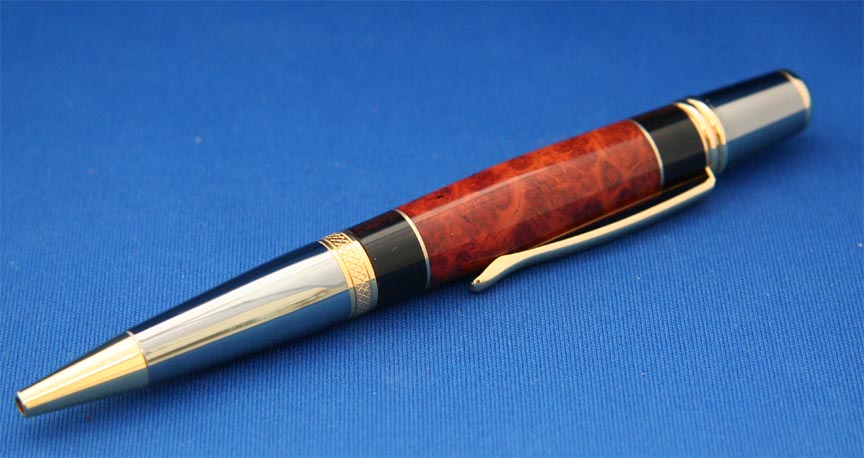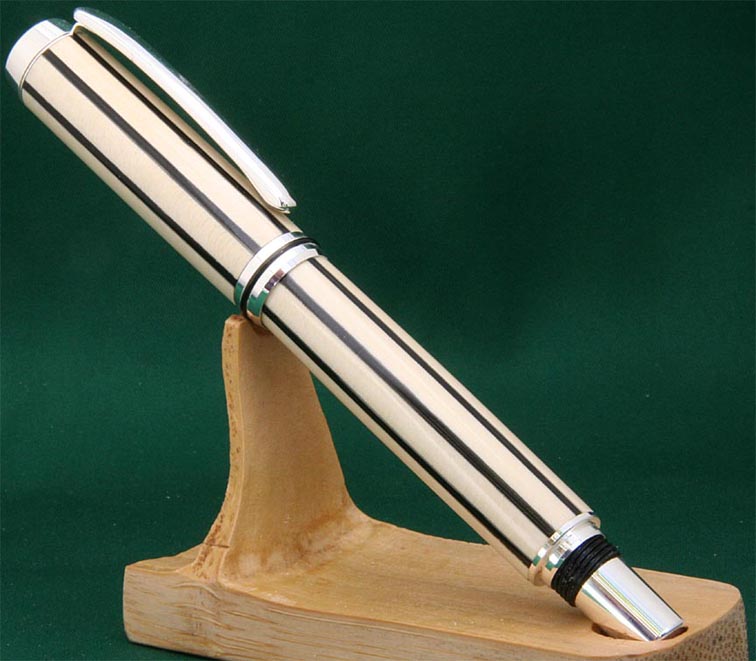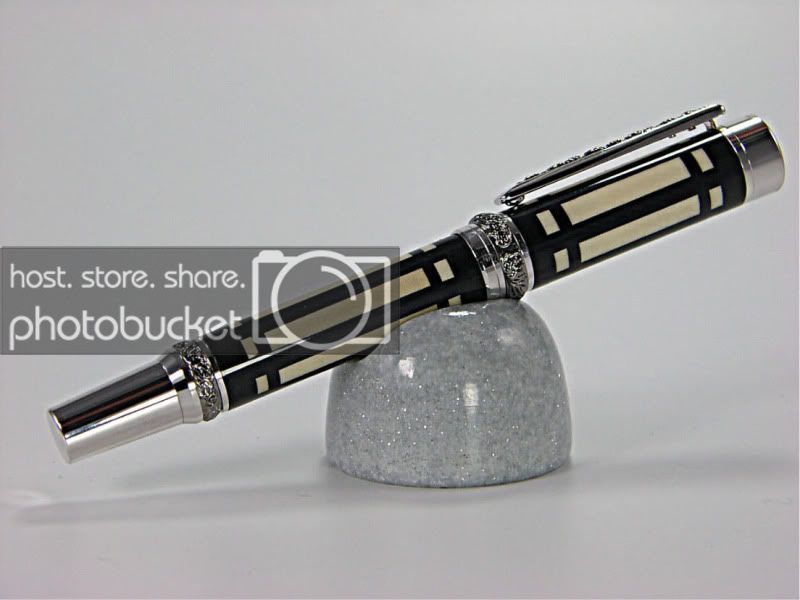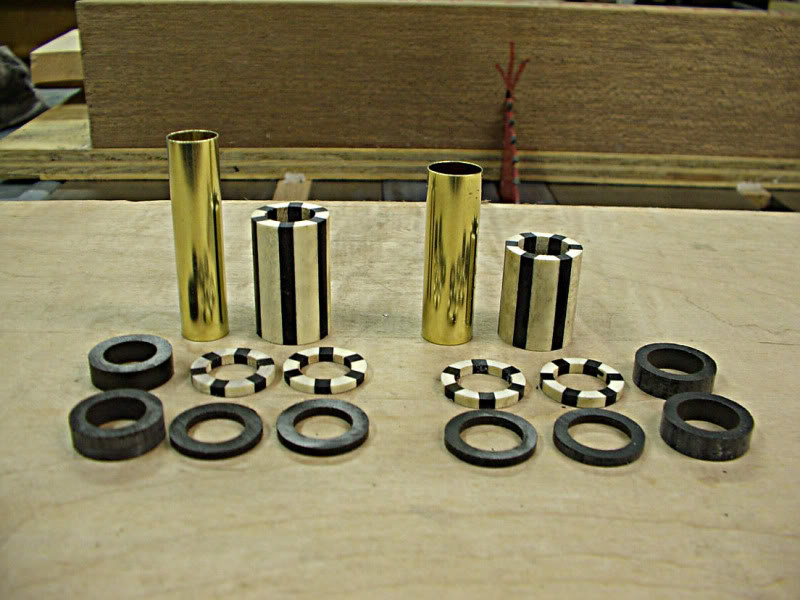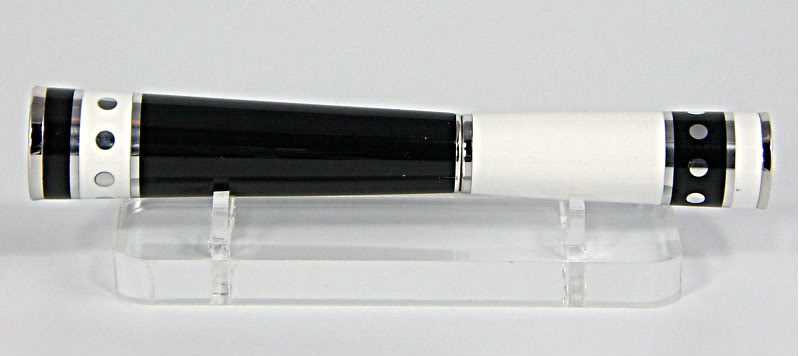:bananen_smilies022:Here are my 12 steps for a complex segmented pen like the castle I have shown.
1 I make up my segmented blanks
2 put on a coat of thin Ca glue to fill any viods
3 wrap the blank tightly with duc tape
4 drill hole for tube,starting with a smaller drill and working my way up to the correct size
5 cut blanks on bandsaw with sliding table to proper size and slip them on a tube to keep them in proper order. ( very important )
6 transfer to work bench, where I have another longer than needed tube mounted on a 6"x6" block of wood covered with a piece of wax paper.
7 Using wood glue, transfer and align your segments on the tube in proper order, and longer than is needed
8 check your alignment and clamp over night
9 saturate with thin CA again
10 round off the square edges of your blank on a disk sander to avoid grabs, and square ends
11 mount on your lathe and turn. stop every couple of turns and coat with CA again
12 put on finish of choise and add fittings. stand back and smile
Jim S
Note!! If you are using metals or resins, you will have to put your blanks together with Thick CA ( more working time and gap filling ) or epoxy to make them stick together.

